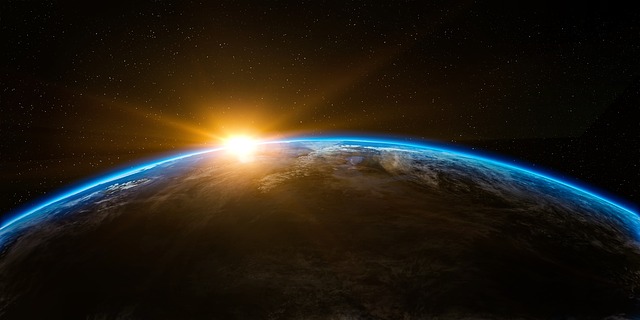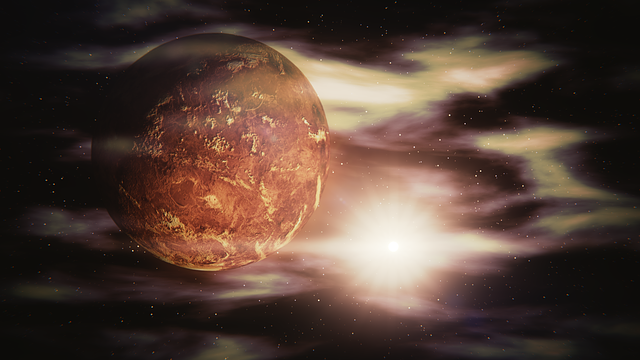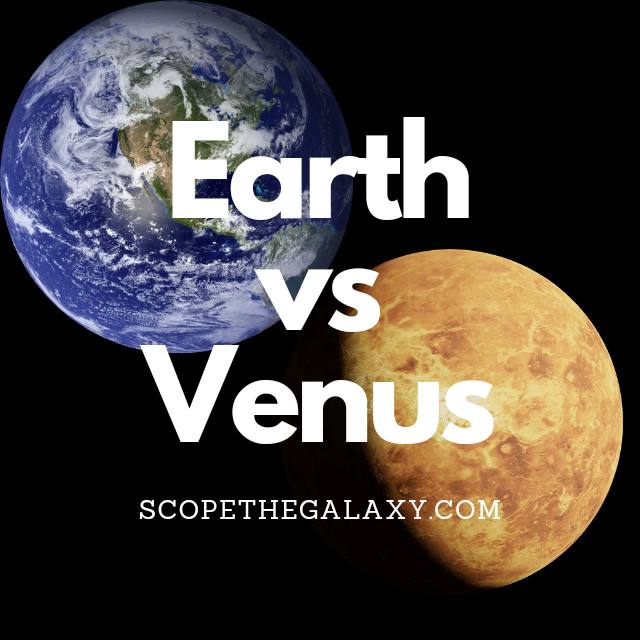*This post may contain affiliate links. This means we may make a commission if you purchase an item using one of our links*
The main differences between Earth and Venus would be that Venus is both the brightest and hottest terrestrial planet in our solar system whilst Earth is the only terrestrial planet with intelligent life, a day on Earth is 24 hours whilst Venus completes a full rotation in 243 days, Venus takes 225 days to orbit the Sun whilst Earth takes 365 days and Venus has an atmosphere with a mass 93 times more than Earth.
Both have a whole host of very similar features whether it be their general size, composition and so on but there are also numerous other differences.
Therefore, if you want more information on Earth and Venus, continue reading for a more detailed breakdown.
What Is The Planet Earth?
Table of Contents

Our home planet Earth is the 3rd farthest planet from the Sun, made up of a mixture of water and solid rock like objects, and is the only entity in our solar system known to allow intelligent life forms like ourselves to exist.
Earth’s distance of 152 million km from the Sun has allowed it to remain within the goldilocks zone and as a result, the planet has been able to thrive for millions of years. It orbits the Sun in a cricular pattern, much like all the other planets, has only one natural satellite which would be the Moon and is a terrestrial planet to boot.
In regards to its diameter, Earth is the 5th largest planet with a diameter 12,742km.
Earth’s temeprature ranges based on the region you’re located where it can be from as low as -94 degrees Celsius in Antartica to as high as 50 – 55 degrees Celsius in Tunisia.
As for the planets composition, it consists of the crust, the mantle, the outer core and the inner core, where the inner core is the hottest element within the Earth reaching temperature in excess of 5,200 degrees Celsius.
In regards to some of its most unique features, Earth is around 71% water, has an atmosphere consisting mostly of oxygen and nitrogen that is also made up of 5 main layers, with the highest to lowest being the troposphere, stratosphere, mesosphere, thermosphere and exosphere.
A day on Earth is 24 hours and an orbital cycle around the Sun takes 365 days to complete. It’s axial tilt is more distinct at 23.5 degrees to the right.
What Is The Planet Venus?

Venus is the 2nd closest planet to the Sun and is often regarded as Earth’s sister planet. It’s very close to our Earth in size where its diameter is 12,104km. This is just over 600km less wide than our home planet.
Unlike all the planets further outside the Sun’s orbit, Venus and even mercury have no moons orbiting it. The most probable reason for this is due to its closer proximity to it, which means that smaller objects orbit the Sun as opposed to Venus.
Venus is also the hottest planet in our solar system where its surface temperature is 475 degrees Celsius. This is due to a number of factors, like the thicker atmosphere, close proximity to Sun, the reasons for which have been explained in more detail here.
It’s core is hot too, similar to that of the ice giants and Earth, where it stands at 5,200 degrees Celsius.
As a result of this thicker atmosphere, Venus is also able to reflect a lot more of the light the Sun projects at it, making it both the hottest and brightness planet in our solar system. This is why for the longest time, and even till this day Venus is often referred to as the morning or evening star.
The thicker atmosphere is mostly compromised of carbon dioxide, and thick clouds of sulfuric acid. This does result sulfuric acid rain on the planets surface, which of course is very corrosive.
Being so close to the Sun also mean its orbital cycle is much shorter. It takes Venus 225 days to complete a full cycle, on the contrary a single day is actually longer than this where it takes around 243 days for a full rotation around its axis.
This is partially down to its distance from the Sun and the thick atmosphere surrounding this terrestrial planet. The axial tilt on Venus is also different from the other planets in our solar system where it is practically straight at 3 degrees.
All in all this is certainly one of the most interesting planets in our solar system and in many peoples eyes, could very well have supported life in the past based on how close its shape and size is to that of Earth.
Similarities Between Earth And Venus
Venus and Earth do share a fair amount of similarities, which in this case would include the following:
- Both have a hotter central core.
- Both are a spherical in shape.
- Both are terrestrial planets.
- Both have an atmosphere and a rocky surface.
- Both orbit the Sun in a circular pattern.
- Neither are tidally locked to the Sun.
- Both have no rings surrounding them.
- Both are very similar in diameter.
- Both have a core temperature of around 5,200 degrees Celsius.
Differences Between Earth And Venus
In regards to the differences between the two, they include the below:
- Venus is the brightest planet in our solar system, which does make it much brighter than Earth.
- Earth’s atmosphere isn’t as thick as Venus’ where it is roughly 93 times the mass of Earth’s atmosphere.
- As a result of this thicker atmosphere Venus also is the hottest planet in our solar system where it is 475 degrees Celsius on average whilst Earth is 13.9 degrees Celsius on average.
- Earth is slightly bigger with a diameter of 12,742 km whereas Venus has a diameter of 12,104km.
- Earth’s density is 5.51 g/cm³ whilst Venus is slightly less with figures equating to 5.24 g/cm³
- Earth has 1 moon whilst Venus has 0.
- Earth takes 365 days to orbit the Sun whilst Venus orbits the Sun in 225 days.
- A day on Earth takes 24 hours whereas Venus takes 243 days to complete a day.
- Venus has a weaker gravity of 8.87 m/s² as opposed to Earth’s 9.807 m/s².
- Earth has a mass of 5.972 × 10^24 kg whereas Venus’ mass is 4.867 × 10^24 kg.
- Venus has an axial tilt of 3 degrees whilst Earth’s axial tilt is 23.5 degrees.
Summary
Venus and Earth are like two peas in a pod where it has always been assumed that Venus once in the past may have had water covering the majority of its surface and potentially was host for life but, in our current era the two more so host numerous differences instead.
This could include the differences in temperature, atmospheric composition, color, the moons that orbit them, the length of each planets day and more. Both Earth and Venus showcase numerous characteristics that makes them so unique even if they share a ton of similar features too.

